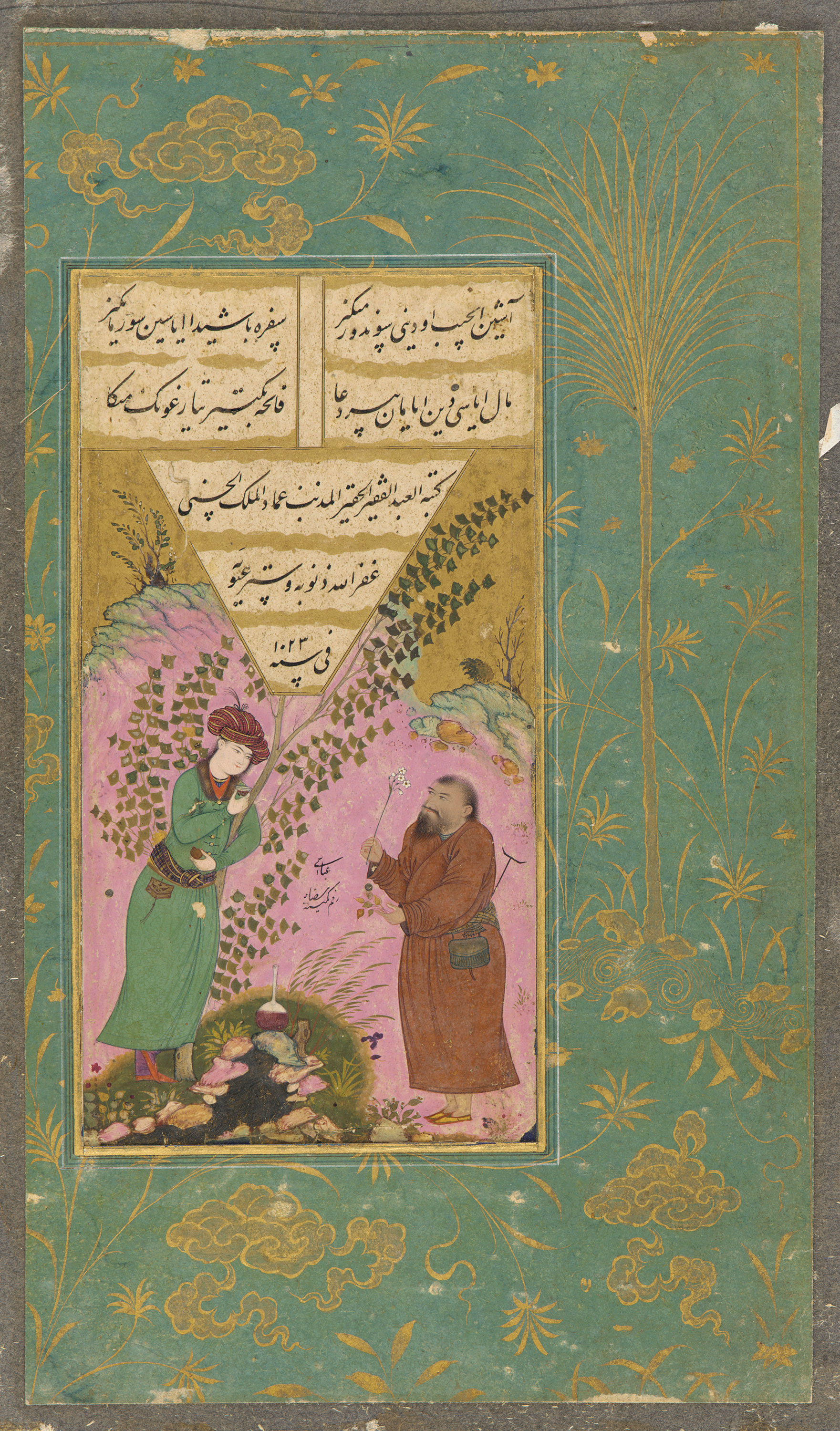Colophon page from Makhzan al-asrar by Haydar Khwarazmi
A colophon traditionally provides information on the completion of a manuscript. This example fits neatly into a triangle, a popular shape for colophons, following the last two verses of the text. It reads: “Copied by the humble and poor and sinful slave Imad al-Mulk al-Hasani, may God forgive his sins and cover his shortcomings, in the year 1023.” A painting by the celebrated Safavid artist Riza-i Abbasi occupies the rest of the space. Depicting an old man offering a flower to a youth, the image bears no direct relation to the text. Riza-i Abbasi’s signature appears in minute letters in the center of the image.
This folio comes from a manuscript that was completed a year before Mir Imad’s murder. It belongs to a copy of the Makhzan al-asrar (Treasury of secrets) by Haydar Khwarazmi and provides rare proof of the collaboration between the calligrapher Mir Imad and the painter Riza-i Abbasi, two of the greatest artists of their time. As neither man worked exclusively for the royal atelier of Shah Abbas I in Isfahan, the manuscript may have resulted from a private commission by a wealthy patron.
Colophon page from Makhzan al-asrar by Haydar Khwarazmi
Signed by Mir Imad al-Hasani (d. 1615)
Painted by Riza-i Abbasi
Iran, Isfahan, Safavid period, dated 1614 (1023 AH)
Ink, opaque watercolor, and gold on paper
Lent by the Art and History Collection LTS1995.2.85


